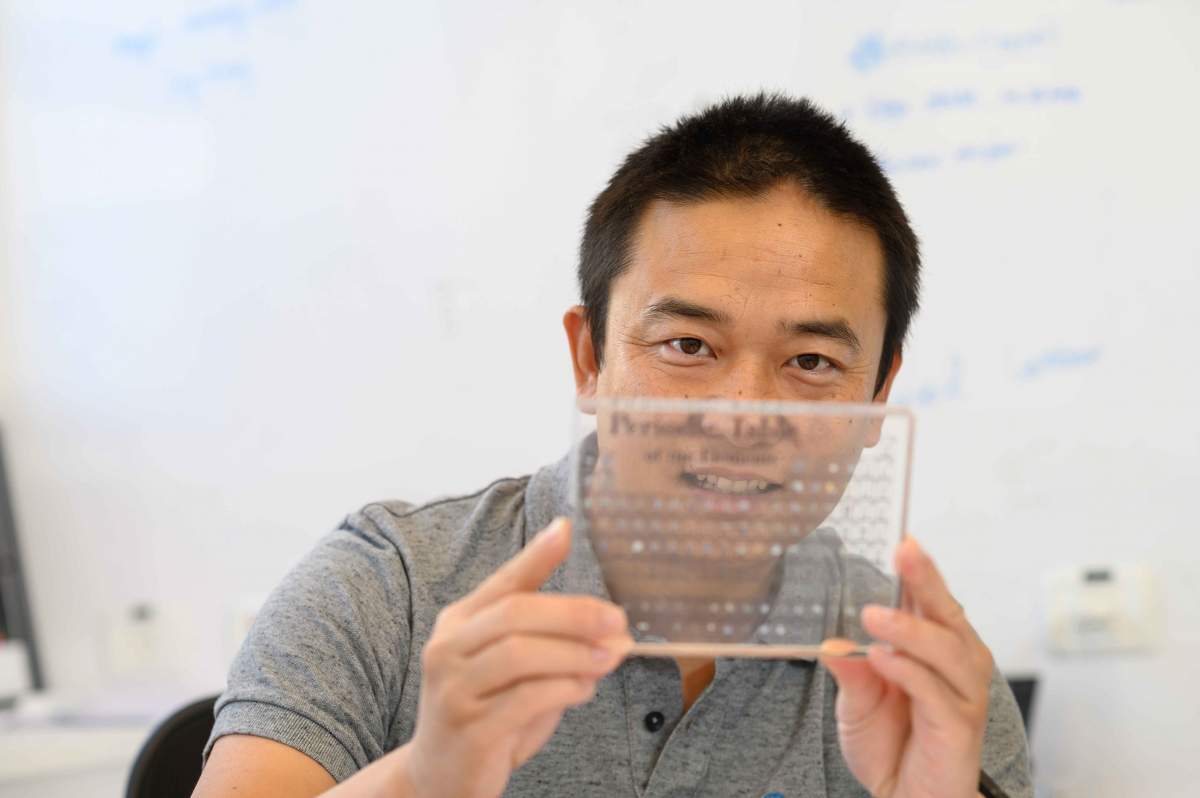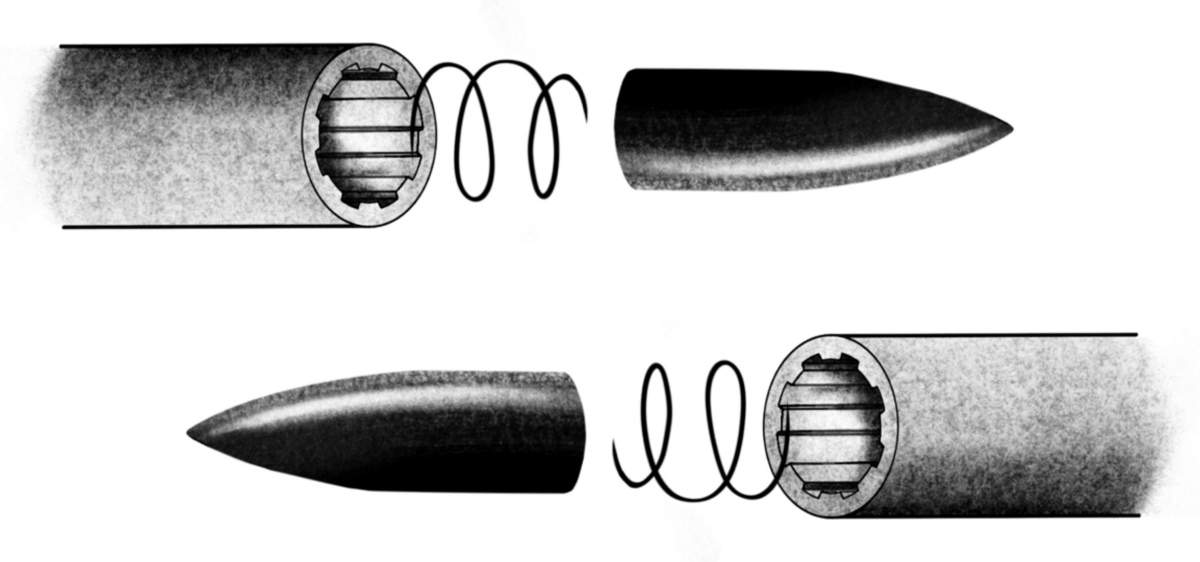Are you a journalist? Please sign up here for our press releases
Subscribe to our monthly newsletter:
Digital displays comprising organic materials have brought about a new era in consumer electronics, helping to mass produce brighter screens that hold numerous advantages over those made of regular crystalline materials. These organic light-emitting diodes, or OLEDs, can, for example, enable the manufacture of foldable phones that double their screen size when opened.
Yet even the most advanced OLED displays in production today waste about half of the light they emit – a shortfall that had seemed unavoidable because it stems from the physics of light. A new study, led by a Weizmann Institute of Science researcher, Prof. Binghai Yan of the Condensed Matter Physics Department, may lead to a change in the way future devices light up their OLED screens.
In this collaborative study, Yan and colleagues discovered a new method for controlling a key property of light. This technique, which involves new material and device designs, paves the way to making screens that are twice as bright – or twice as energy efficient – as the ones currently on the market. It may also lead to far faster data transmission capabilities than those existing today, applications that showcase the huge potential of next-generation organic semiconductors.

To understand why state-of-the-art displays have a brightness cutoff, we must first consider the property of light known as handedness, or chirality, a term derived from the Greek word for “hand.” Its meaning depends on the context. In physics, chirality refers to the self-rotation of particles in relation to their motion. When photons or electrons flow, they move in space, but they also spin. When these particles spin in the same direction in which they travel, as a bullet does, we call their chirality right-handed; when they spin against that direction, they have left-handed chirality.
In biology and chemistry, chirality refers to objects that are mirror images of each other, like two hands. For example, DNA, proteins and most other naturally occurring organic molecules are termed right-handed. And there is considerable interplay between different types of chirality. For instance, the geometric chirality of molecules in an organic material determines the chirality of particles passing through them.
"The findings ran so counter to everything that was known in the field, other scientists had a hard time believing the results. They said that something was probably wrong with the experiments"
This is relevant to many display applications because these displays have a transparent outer layer made of a chiral material, which allows only one-handed light – say, right-handed – to pass in and out, blocking the entry of photons of the other chirality. It does this to neutralize incoming ambient light, whose chirality is mixed; if allowed to pass through, this light would lower the screen’s contrast, making it difficult to view in daylight.

The one-handed transparent layer is essential for operating displays in bright light (try using your smartphone to navigate at high noon without it), but it’s wasteful. When the diodes of modern screens emit light – which generally has a mixed chirality – toward the screen’s surface, half of this light’s photons cannot reach the viewer, as their chirality doesn’t match that of the transparent outer layer, which is fixed to neutralize ambient light.
But this may be about to change.
In the new study, Yan and his team proposed controlling the chirality of photons in ways previously deemed impossible. The proposal involves diodes that will predominantly emit light of one chirality – the one that matches the chirality of the transparent outer layer. This can be achieved by creating diodes that simultaneously emit light in opposite directions – one facing forward, the other backward – and are outfitted with a back panel coated with a polymer containing a chiral organic material. Half of the diode’s light, the one that has a chirality matching the transparent layer, traverses this layer unhindered. But the remaining half is not lost. Rather, it bounces back and forth until hitting the back polymer panel of the diode, which flips its chirality. This polymer is engineered in such a way that the chirality information it contains is efficiently converted into the rotation of electrons, and then into the chirality of light, leading to strongly polarized light emission.
The study began with experimental results that initially appeared to be downright bizarre.
Dr. Li Wan, then a postdoctoral fellow at Linköping University in Sweden, found what we now know to be a method for controlling and amplifying the chirality of light in organic devices.
“These findings ran so counter to everything that was known in this field, other scientists had a hard time believing Wan’s results. They said that something was probably wrong with his experiments,” recalls Yan.
Wan and his PhD supervisor, Prof. Alasdair Campbell, had shown that they could flip the chirality of an electron flow in their experimental installation by changing the polarity of the battery generating the electric current. Each time they flipped the polarity of the power supply, the chirality of the electron flow changed consistently. As they didn’t change the materials, this finding was contrary to all textbook knowledge at the time.
"We’ve revealed an intriguing unity between seemingly unrelated aspects of chirality: the structural geometry of a material, the handedness of an electron flow and finally, the handedness of light"
Campbell was convinced they were on to something important, but he passed away in 2021, before Wan could back up his findings theoretically. Following Campbell’s death, Wan sought out Yan, whose online lecture on chirality he had heard. In that lecture, Yan talked about his theory which, using concepts of quantum physics, explained how the chirality of a material determines the chirality of an electron flow.
Yan started analyzing Wan’s experiments with Wan and two other scientists, Dr. Yizhou Liu of Weizmann’s Condensed Matter Physics Department and Prof. Matthew J. Fuchter of Imperial College London. Yan had to extend his theory of chirality so that it would explain Wan’s results, but Yan ended up showing that these findings were actually an inevitable outcome of his own theory. Moreover, the scientists found they could also control the chirality of light emitted by the electron flow by making sure that the photons fly out along the same trajectory as the flow, thus preserving their bullet-like spinning.
“We’ve revealed an intriguing unity between seemingly unrelated aspects of chirality: the structural geometry of a material, the handedness of an electron flow and finally, the handedness of light,” Yan says, summing up the new study.

Apart from improving the efficiency of our screens, the study’s findings could also be applied to achieving speedy data transmission. They could, for instance, be used to create optical switches that will work vastly faster than any mechanical ones, flipping the chirality of the photon flow – say, right-handed to denote 0, and left-handed, 1 – by switching the electric polarity.
And last but not least, yet another outcome of this research is that textbooks will need to be updated to account for Yan’s theory of chirality.
Making these discoveries at the Weizmann Institute resonates personally with Yan, who was born in China and moved to Israel with his wife and two children in 2017 after conducting postdoctoral research in Germany and the United States. Only after Yan came to Weizmann did he realize that he had ended up at the same research institute as Prof. Ron Naaman, of Weizmann’s Chemical and Biological Physics Department, whose seminal 2011 paper on the chirality of DNA and electron flow had inspired Yan to focus on the interplay between different forms of chirality in the first place. “It’s a closing of a circle for me,” says Yan, “and it has the added benefit of my being able to stop by and chat about chirality with Ron Naaman over morning coffee.”

Some new OLED screens boast a luminescence of 1,000 nits, units used for measuring brightness in which a single unit equals the output of one candle per square meter. A typical movie theater has a brightness of 50 to 100 nits, and most 10-year-old televisions have a brightness of lower than 500 nits.